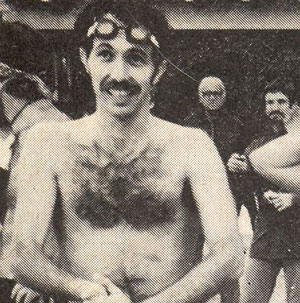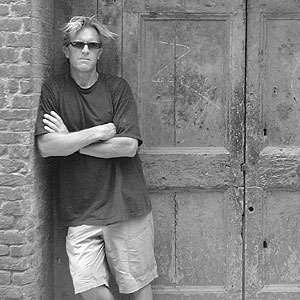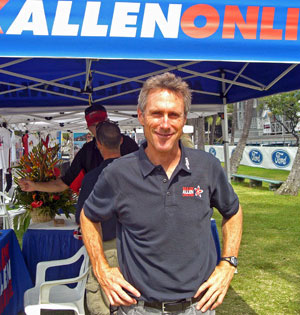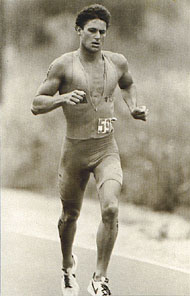John Howard then and now
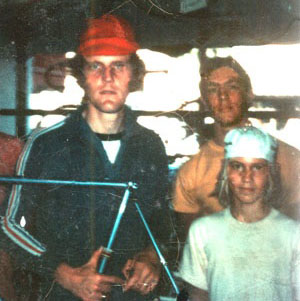
Among his many titles, John Howard captured Pan Am gold, a 24 hour record and the 1981 Ironman Hawaii Championships. We wanted to know more about the 1981 Ironman champion and what he is up to these days.
ST: You won the 1981 Ironman in Hawaii, would you mind telling us what inspired you to do the race?
John: Tom Warren’s off-the-wall feature in Sports Illustrated in '79 did the trick. I was hooked. At the time, I had just been booted off the US national cycling team for what amounted to be being too old. Pointing out that I was still the best didn’t help, I even used one of my favorite Emerson quotes "We need not count a man’s years until there is nothing left to count." All to know avail, so I decided it was time to change sports. Triathlon was on such an infantile level back then that a strong cyclist could do well and I did.
ST: Did you have any specific training leading up to the Ironman?
John: I swam competitively as a very young kid, and ran track in High School and then in college. My main athletic claim was that I was a very fit former Olympic cyclist. Drawing off my previous training in swimming and running I worked hard to balance the three sports, but the run beat me up, and in retrospect, my base was way to shallow. I should have eased off the mileage and certainly the intensity, but I had more enthusiasm than brains back then.
ST: Could you describe how your day went during the Ironman in 1981?
John: Prior to the Hawaiian Ironman there was another full distance event in Iowa that I did in September to test myself for the Feb race on the Big Island. I won easily with a time of around 9 hours so it was clear I was ready. I honed my swim training with masters workouts at the Houston JCC, and continued training up to 40 hours a week at my peak. The problem was that when I arrived in Kona, the over-amped running came back to haunt me, and on my last long run before the race, I returned limping with a ligament injury to the right plantar aspect. I could not even run, just a few steps were painful. To deal with the pain I had massive amounts of cortisone injected into the foot. I iced it and elevated it and focused instead on the bike and swim for training. I did a full distance motor pace of the bike course in just under 4 hours, but I was worried that all my preparations would be for nothing if I couldn’t run. Still, I had confidence in my Doctor’s treatment would work, and on race day I felt strong. The swim was way too comfortable, so I played catch up on the bike, and took over the lead near the turn around point on the bike. That year in Kona the sun was out all day with brutally hot temperatures. Actually, all of us participants were pioneers of a sort. The medical community had decided that since so many people had never put themselves though this sort of a test before, perhaps some of might loose more than 10% of our body weight and die. So to fix the problem we had to stop our progress in mid race three or four times and get weighed. More than 10% down on weight and you were DQ’d. I went into the pre-race weigh-in super light to avoid the problem. I battled Molina on the run, and when we crossed paths he was only a few minutes behind me. I made a point of looking extra fresh and smiling at him. Warren and Tinley were also gaining on me in the run, but I crossed the line a comfortable half an hour or so ahead of Warren for the first Big Island Ironman win. The next time I saw Scott Molina he was being carried across the finish line on a stretcher. Tinley finished third that year. It was the sort of victory that meant a lot to me because I have always held athletic diversity as a pinnacle sports participation. I'm sure everyone in attendance at the awards ceremony that year remembers my silly self-serving comment about cyclists being the best athletes. It was a throw-back to the first Ironman where the participants debated the strengths of the different athletes. In the context of the awards banquet it was out of place and Tinley rightfully called me on it the next year when he accepted his trophy for the win.
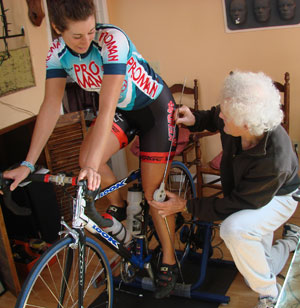
ST: John, what are up to these days?
John: My main focus is our web based business johnhowardsports.com. Our CEO Ralph Walker, Dr. Ernie Ferrel and I have begun certification classes for our FiTTE system. (Fitness, Training, Technique and Equipment.) I am conducting quite a few fits at Coastal Sports & Wellness Medical Center in San Diego, and Dr. Ferrel has his practice in Santa Barbara, CA. Ernie and I have recognized for some time that the science of fitting athletes is lacking a medical basis and in that regard, there is really no standard and practice for bike fitting. Our experience in fitting cyclists and triathletes spans 30 years each. So much of the current emphasis is on turning allen bolts, which is certainly important, but it is not the essence of the fit. We think the body deserves some serious consideration. For example, how is a flexibility challenged athlete going to generate sustainable power in an aero position if that was the only consideration for the set up? We spend far more time doing soft tissue release and documenting every step of the process so athletes can see how each change effects power, torque and efficiency. We also use software programs to illustrate to our clients how, and precisely what they need to focus on to improve performance. We emphasis three inter-related components, the actual mechanical fit which concludes with soft tissue manipulation. We the give each client a booklet that includes focused stretches that relate to each individual’s idiosyncrasies, and finally, using the same guidelines, we construct a personal strength program that replicates the precise motor response of pedaling to address the individual deficiencies in strength. The documented results are amazing!
ST: Talking about fitting, who helped you then get fitted on your bikes?
John: When I was racing, I used to drive to Santa Barbara to get the bikes and body tweaked before each important race.
ST: You still look like you are in fantastic shape. What are you doing in terms of workouts and can you describe a typical training week for you?
John: Thank you! I travel and work full time on the business, so training is now lesser priority. I still have an ego however, so I recognize the need to make each of say 5 workouts per week count. To do this I use a combo of flexibility, strength and power workouts to accomplish my fitness objectives. A correct diet and a full spectrum approach to micro nutrients completes the equation. It is essentially the same plan that my staff and I use for our training clients, who I'm proud to say have won over 160 national championships, several RAAM victories, Ironman, and at least 12 world titles along with 2 Olympic gold medals.
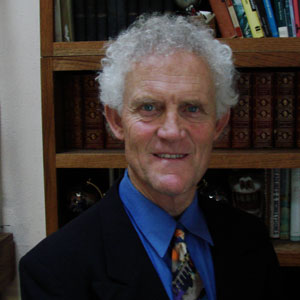
ST: How many bikes do you have in you garage? Would you mind listing what they are?
John? I'm not sure of the actual count, I have an ongoing racing, testing, designing relationship with KHS, so there must be at least 10-12 Road, TT and MTB's production and prototypes in the garage along with a constantly changing collection of vintage cars. Of the collection of vintage bikes, most are my old racing machines, but some of the 15-20 antiques collectibles date all the way back to the 1870' and early 1900's. Many of them I actually ride to pay homage to the past.
ST: Of all your athletic achievements, which one or ones do you cherish the most?
John: The Pan Am gold in Cali, Columbia in `71 was historically significant in that it helped bring real funding into American cycling. The Tour of Ireland podium finish in `73 was important for USA cycling in that it established the team as being internationally competitive and got us more international invitations. Eventually that lead to the 7-11 invitation to the Tour de France and you know the rest of the story. The 24 hour record of 539 miles in '87 was my longest hardest day in the saddle and the 152 mph paced speed record at Bonneville in '85 was a real hoot, the culmination of 3 years of hard work. Winning the first Ironman on the Big Island—dinosaurs still walked the early back then– was personally extremely gratifying. I told Jim Lampley with ABC Sports that I valued it more than an Olympic Gold.
ST: Do you follow any other sports?
John: Yes, motor racing. I'm a Walter Mitty race car driver, and am a F-1, stage rally and sports car racing enthusiast. I do carts whenever I have the time as that is cheap seat time and gives you a real feel for speed. Additionally, I follow the local pro teams, the Chargers and Padres.
ST: Do you have a strict diet or do you eat what ever you like
John: I’d say I like what I eat, which mostly follows good macro and micro guidelines, but I’m not a pedant about diet either, and have a horrible sweet tooth. We promote correct nutrition as a vital element of the total performance coaching equation, so I try to follow my own advice.
ST: Is there anything else we should know about you?
John: As a coach, and bike fit analyst, I’m hugely excited about taking my athletes to levels beyond anything I ever achieved. Success has to be measured in terms of enthusiasm, and even though it has it needs to be properly channeled, I’d take gut level excitement over talent any day.
The first picture in this story was actually discussed in this forum thread.


